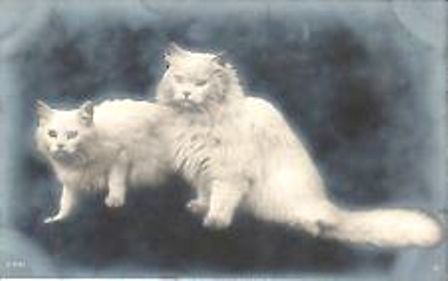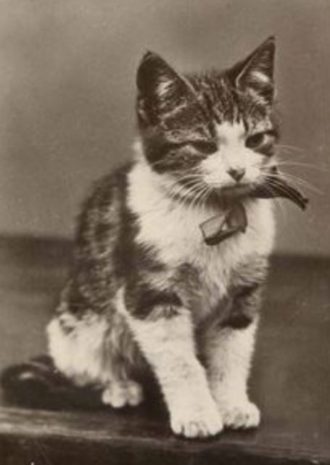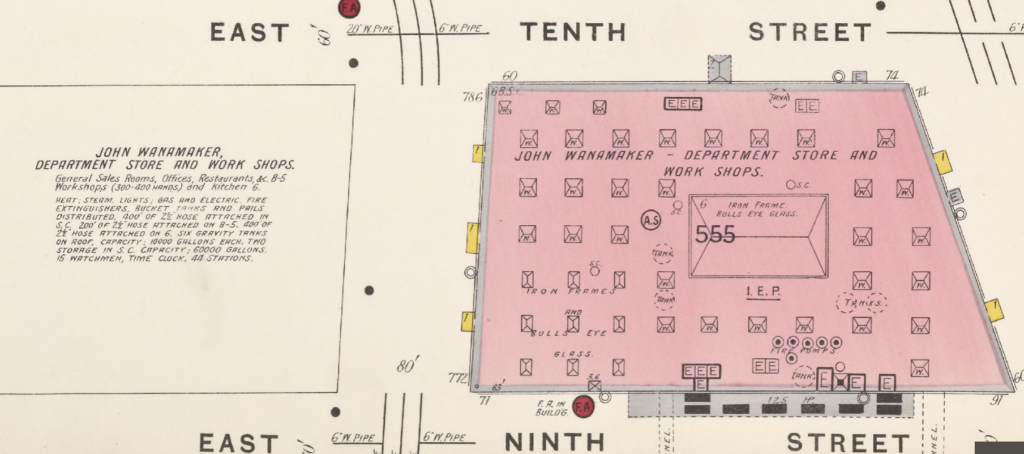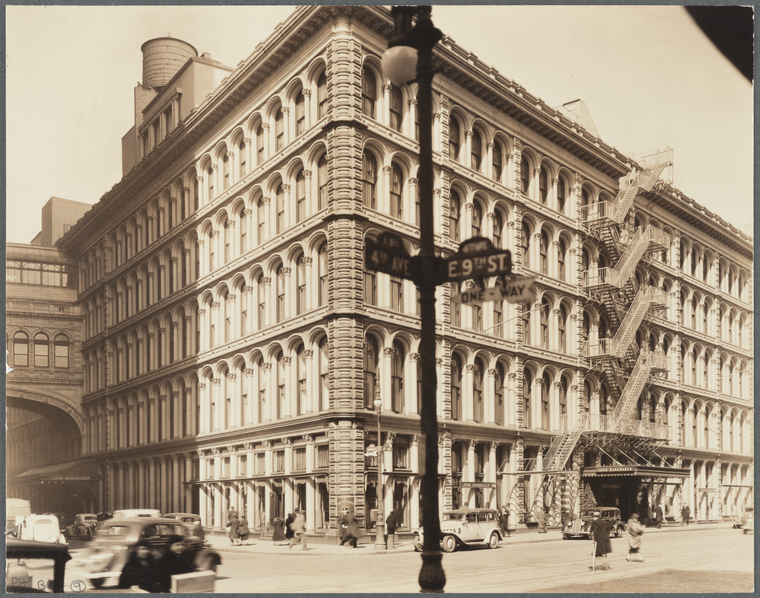
Founded by John Wanamaker, Wanamaker’s was one of the first department stores in the United States. Although its flagship store was in Philadelphia, Wanamaker’s also had a large store bounded by Broadway and 4th Avenue, between 9th and 10th Streets, in the old “Iron Palace” constructed in 1862 (the former home to A.T. Stewart & Co.) New York Public Library Digital Collections
I don’t know about you, but I think it’s sad that we celebrate the holiday season with so many big-ticket holiday gifts like smart phones, huge flat-screen TVs, cars, and other electronic devices. Sure, I use and depend on many of these items, but for me, electronics don’t throw off seasonal vibes of love or warmth or happiness. In fact, I’d rather step back in time to the late 19th century (just for a day or two), when one could purchase one of the hottest gifts for upscale families at Wanamaker’s department store.

If I could take a time machine back to December 1897, I’d stop at Wanamaker’s dry goods store on Broadway and East 9th Street, where there was a fine display of ribbon-bedecked “Angora” cats that sold for $10 to $40 each. I’ll take a beautiful live cat over of a cold electronic device on any day, let alone Christmas day.
Wanamaker’s called the event a “bargain day for cats.” Its main purpose was not to find good homes for the felines, but to lure in large crowds in order to boost sales throughout the department store. (Sadly, commercialism was in full force even back then.)

According to an article in the Buffalo Evening News, each cat had a pet name tagged onto his or her cage, such as Peggy, Tammany, Romeo, Hamlet, Juliet, Maggy, Jack and Jill, and Fedora. Above the cats’ wire cages hung smaller cages filled with singing birds. A cat doctor was in constant attendance to ensure their well-being.
“What is the price of Tammany?” one news reporter asked the cat clerk. “Tammany’s sold,” the clerk replied. “He brought $20, and we can’t keep supplied with Tammany cats.”

The clerk continued, “Here’s Peggy. She’s marked $10, but if you want her I will let her go for $9.99. Jack and Jill together are worth $30, but as an inducement we will sell them for $29.99.”
The cat clerk had a sense of humor. The news reporter had $29.99, which he gave the clerk to purchase Jack and Jill.
As fast as the cages were filled with Angora cats, they were sold to people of wealth who had seized upon this new Christmas gift fad.
One customer who stood by and watched the Angora cats fly off the shelves said she was going to start raising cats for the department stores the following year. “There’s money in it,” she said.
“By and by there’ll be bargain day goats and dogs” the woman continued. “It’s a great scheme, this cat scheme, to draw trade, and if you can raise such a crowd as this to buy cats, why not have bargain day goats?”
Although Wanamaker’s claimed that all of the cats were Angoras raised in Maine, the reporter for the Buffalo Evening News reported:
Some of the cats did not resemble Angoras. They looked more like the everyday suspicious Bohemian cat which had been chased out of alleyways by bricks and dogs. But they sold like hot cakes just the same. There is more profit in the cat sales than in any department of the store.”

That year, many other stores had gimmicks such as orchestras and hot coffee to lure people into their stores, but none of the “less fashionable notion stores” could compete with the bargain cat day at Wanamaker’s.
In response to the high-society Angora cat sales, one establishment even placed a placard outside saying this:
“After seeing Wanamaker’s fashionable Broadway cats, come in and see our Bowery cats. Prices five cents up. You don’t have to feed them. Just turn them loose and they feed themselves.”
According to an article about the inaugural cat event in The Sun, a black Angora cat and a yellow and white Angora cat were sold to the Central Park Zoo. The zoo reportedly planned to breed the pair, with hopes that the kittens would have “a much desired hue of coat.”
The Bargain Cat Day Tradition
I’m not sure how long Wanamaker’s continued selling Angora cats at Christmas, but the event received a lot of press in 1899, when about 25 cats were placed on display in a large, sunny room on the fifth floor of the store. There were no more mentions of Christmas cats in the newspapers after this year.

Although most of the cats stayed in cages, one cat named Wizard had full run of the room in 1899. When he wasn’t walking around the room checking things out, he would doze in a silk-lined wicker basket “with a dignity befitting his price–$50.”
His closest competition was Cromwell, who had perfect coloring and was also priced at $50.

All of the cats sold at Wanamaker’s in 1899 were reportedly raised on the Walnut Ridge cat breeding farm in Maine, and they could all boast a long ancestry of prized Angoras. For those who had never owned an Angora cat, Wanamaker’s hired staff who could teach perspective owners how to groom and care for their new Christmas pet.
Incidentally, in 1899 Wanamaker’s also had another crowd-pleasing display in its basement–500 canary birds, all raised by peasants in the Hartz Mountains of Hanover, Germany. Miss Virginia Pope, a bird specialist, was also on hand to give advice on caring for the birds. I wonder if anyone ever bought an Angora cat and a canary at the same time?


NYPL Digital Collections

NYPL Digital Collections
In 1954, due to a continuing northward migration of the city’s shopping district, Wanamaker’s closed its Manhattan store. The northern lot with the old A.T. Stewart building was sold in 1955; a five-alarm fire gutted this building while it was under demolition in July 1956. In 1960, a large residential building called Stewart House was constructed on the site.
The annex at 770 Broadway survived, and was turned into office space for Chemical Bank and other tenants. Today a Kmart occupies the lower levels and offices occupy the top floors. You can probably find a few electronic gifts at Kmart, but good luck finding any Angora cats there.




Wow! I try to get my holiday shopping done early, to avoid the crowds. But if there were cats involved, I’d definitely make an exception!
This is one of the best written and most entertaining blogs about cats. It’s a pleasure to read — I link to nearly every post in my own published texts and highly recommend it.
“Wanamaker’s hired staff who could teach perspective owners how to groom and care for their new Christmas pet.” I’d like to have that job!